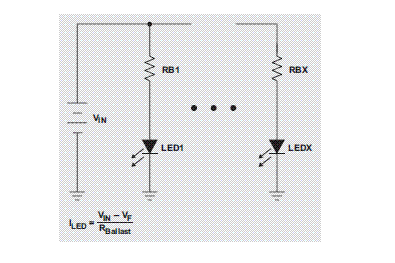- This topic has 1 reply, 1 voice, and was last updated 2 years, 11 months ago by .
-
Topic
-
1. What is LED Driver?
2. What is it used for?
…
1. What is LED Driver?
2. What is it used for?
3. What is the use of High brightness of LED Driver?
4. What is the circuit of the High brightness of LED Driver?
5. Can High brightness of LED Driver be used for lighting normal office rooms?
Viewing 1 replies (of 1 total)
Viewing 1 replies (of 1 total)
- You must be logged in to reply to this topic.

 The second, preferred method of regulating LED current is to drive the LED with a constant-current source. The constant-current source eliminates changes in current due to variations in forward voltage, which translates into a constant LED brightness. Generating a constant-current source is fairly simple. Rather than regulating the output voltage, the input power supply regulates the voltage across a current-sense resistor. Figure below shows this implementation. The power-supply reference voltage and the value of the current-sense resistor determine the LED current. Multiple LEDs should be connected in a series configuration to keep an identical current flowing in each LED. Driving LEDs in parallel requires a ballast resistor in each LED string, which leads to lower efficiency and uneven current matching.
The second, preferred method of regulating LED current is to drive the LED with a constant-current source. The constant-current source eliminates changes in current due to variations in forward voltage, which translates into a constant LED brightness. Generating a constant-current source is fairly simple. Rather than regulating the output voltage, the input power supply regulates the voltage across a current-sense resistor. Figure below shows this implementation. The power-supply reference voltage and the value of the current-sense resistor determine the LED current. Multiple LEDs should be connected in a series configuration to keep an identical current flowing in each LED. Driving LEDs in parallel requires a ballast resistor in each LED string, which leads to lower efficiency and uneven current matching.  Many of today
Many of today